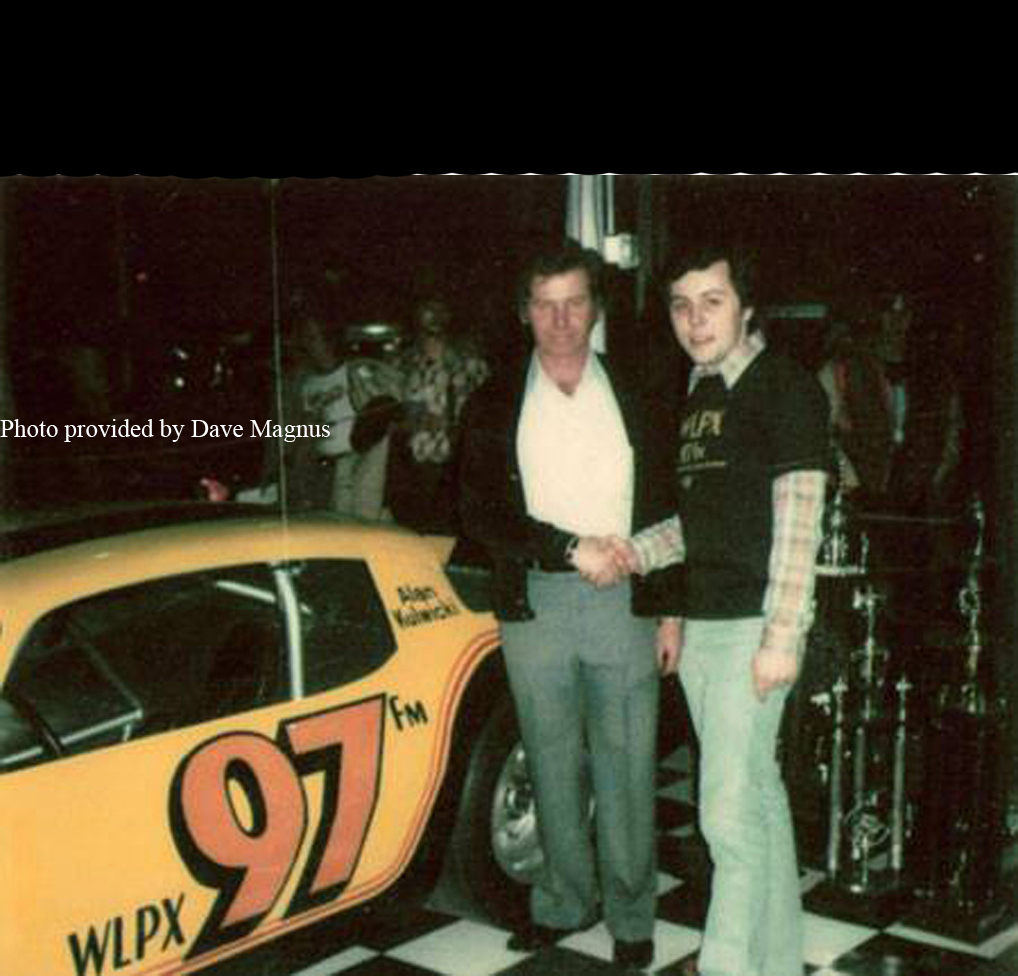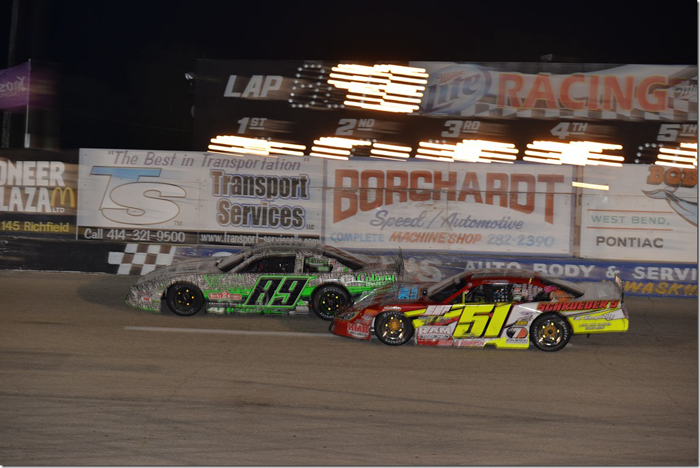Seymour changes

To say there have been “wholesale changes” to Seymour’s weekly, Sunday night program is an understatement.
Gone after 32 years is N.E.W. DIRT, the club that was officially formed after the 1983 racing season to operate the races at the Outagamie County Fairgrounds in Seymour. The track was “the place to be” in the 1960s and 1970s for action on the half-mile. Drivers like J.J. Smith, Roger Paul, “Medina” Smith and Roger Regeth mixed it up weekly.
After the track closed following the 1978 season, it didn’t reopen until 1982 with promoter Bob Heinritz. They promoted four different special events that summer.
Oshkosh’s Dave Panske, a long-time club board member, photographer and public relations director and track historian, has taken over as captain of the ship. It will now be a privately run race track. Panske has been involved with that track since the early 1980s.
With dismal car counts and sagging attendance in recent years, NEW DIRT was in the red last fall after the 2015 season. Out of 215 paid members only 27 showed up to vote on the fate of the club. The final vote was 25-2 to dissolve the club.
Panske stepped up with a proposal to run the track in 2016.
As a privately run facility now the track will also sport a new name in Seymour Raceway Park.
As part of the deal Panske will take on some of the outstanding bills with the club and absorb some of the club’s equipment. Among the biggest changes seen will be the number of weekly classes being trimmed from five to three on a nightly basis. Gone weekly are the IMCA Modifieds, which were the headlining class on Sunday nights for several seasons and the 4 cylinders.
One of the former drivers who was there from the beginning of NEW DIRT was De Pere’s Mike Schmelzer, owner of Bay Speed Center in De Pere. “In late 1983 the club was formed to get the track open again,” recalled Schmelzer. “Pete Laska and some others ran it in 1983 but they didn’t finish the paperwork with the state. So my wife Bonnie and I did the paperwork to make it a non-profit club. Panske was originally involved in the start and Kelly Hafeman was too. That’s how we got it started. That’s when we had the non-profit status. We could get the beer license. They used our liquor license for the fair.”
Seymour wasn’t the only race track that was closed in the early 1980s. The Brown County Fairgrounds in De Pere had closed its doors in 1979. Door County Speedway in Sturgeon Bay was closed too, and Luxemburg Speeedway would close for a time in the mid 1980s as well.
“For us it was mainly making sure we had the legality of it all taken care of,” said Schmelzer. “We couldn’t even open without it. We filled out a ton of forms with the state to make NEW DIRT a bona fide non-profit club.”
For years Seymour Speedway was a traditional half-mile clay oval – like the typical “horse tracks” that were spread around the county fairgrounds across Wisconsin.
“Actually that track was a 5/8 mile and was a half-mile in the grass,” recalled Schmelzer. “Through the ’80s the half mile took a beating, and it lost a lot of clay.”
So in 1988 the club officers decided to convert Seymour Speedway into a third-mile, tri oval.
“Nothing like that had been done around here prior to that really,” said Schmelzer. “The biggest factor to convert the track back then was because the track was shot. There was no clay left. The fences were in disrepair. The cost of fixing that and hauling clay in was way beyond our means.”
Schmelzer and company decided they could get a short track built for much less of a cost than fixing the big track.
“We were bringing in the Street Stocks and the IMCA Modifieds then and the thought was the shorter track was going to put on a better show for the fans anyways,” Schmelzer pointed out.
There were two obstacles facing the club prior to converting the track to a tri-oval.
“The Fair Association had that stage in the infield and they were adamant that we couldn’t touch that,” said Schmelzer.
During the county fair the stage was used for a variety of acts.
“So we had to position the track so (the stage) was safe. That dictated the frontstretch. Their other issue then was the light poles towards the backstretch. There was one pole that everything electrical went to that pole. It was going to cost ten thousand dollars to move that one pole. Pretty soon there wasn’t a definitive backstretch. That’s why it ended up being a tri oval.
In the early years with the tri-oval, it seemed drivers had a love-hate relationship with the uniquely-shaped oval.
“Guys either loved it or hated it,” said Schmelzer. “But what it was it was a driver’s track. It wasn’t a money or a motor track. It made for some good racing when it was prepped right. The clay we had to haul in was one quarter of what we would have needed to pay for the big track. We reused the one and two corner. It was that or nothing. It worked well for many years.”
One of the reasons NEW DIRT folded was as the years marched on, it became more difficult to find people willing to volunteer to perform work at the track.
“We were a very close knit bunch of guys who worked together in the beginning of that club,” said Schmelzer. We had a ton of volunteers. Guys would pick stones. Put up fences. Whatever it took. We had no problem getting help up there. That’s kind of gone away. Whatever the circumstances are nowadays it’s different. Back then everybody worked. We didn’t get paid anything at all. Guys would go out on a Tuesday or a Wednesday and went out and fixed guardrail. It was pretty much automatic. We never had trouble finding people to step up. Ever.”
Now the club is gone.
“Yeah you’ve gotta move on I guess,” said Schmelzer. “I couldn’t keep my nose in it anymore. I know how tough it is and it got tougher as the years went on moneywise. I’m not pointing fingers at anybody for its demise. It’s just the way it is. I think we did a pretty good job. We stuck around for a long, long time. More so for any club longer with the exception of maybe Eastern (Eastern Wisconsin Stock Car – runs Manitowoc County Expo) and the Fox River Racing Club (FRRC – runs WIR’s Thursday night show). Those deals are both still going. It’s just one of those things that ran its course. We had to pass it on. You start to get a little burnt out.”
(This article appeared in the May 2016 issue of Full Throttle Magazine.)






